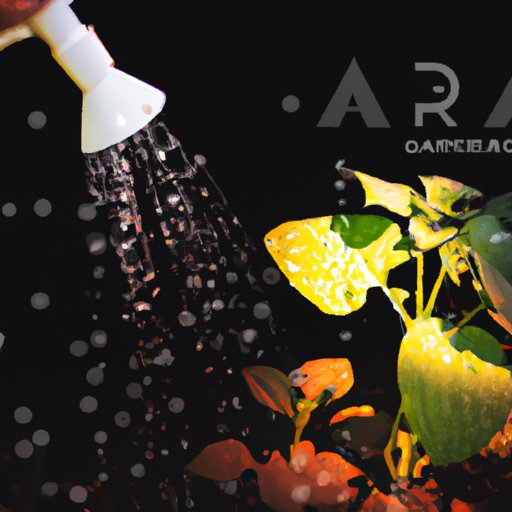Introduction
Watering plants correctly is an important part of successful gardening. The right amount of water at the right time can help ensure healthy growth and keep plants looking their best. This article will explore the best time to water plants, from identifying the different types of plants and their water requirements to understanding the best frequency of watering for plants.

Analyzing the Watering Needs of Different Plant Varieties
Not all plants have the same watering needs. Different varieties require different amounts of water depending on their size, growth rate, and other factors. Identifying the type of plant you’re caring for and its water requirements is the first step in developing a successful watering schedule.
Indoor and outdoor plants also have different water needs. Indoor plants tend to need more frequent but shorter watering sessions than outdoor plants, since they are not exposed to natural rainfall or other sources of moisture. Outdoor plants often require longer, deeper watering sessions.
Exploring the Benefits of Rainwater for Plants
Rainwater is one of the best options for watering plants. It is naturally rich in nitrogen and other minerals that can help promote healthy plant growth. In addition, rainwater has a softer texture than tap water, which can help reduce soil compaction and encourage better root development.
Collecting and storing rainwater for use in watering plants is an easy and cost-effective way to ensure your plants get the nutrients they need. You can collect rainwater in barrels or water tanks, or even set up a system that allows you to direct the runoff from your roof into a holding tank.
Examining the Best Time of Day to Water Plants
The time of day you water your plants can have a big impact on their health and growth. Watering during the hottest part of the day can cause the water to evaporate quickly, leaving your plants with less moisture. Watering during cooler temperatures, such as early morning or late evening, can help ensure your plants stay hydrated and healthy.
In addition to temperature, you should also consider the amount of sunlight your plants are receiving. Watering in direct sunlight can cause droplets of water to act like magnifying glasses, potentially damaging the leaves of your plants. To avoid this, try to water your plants in the shade or early morning when the sun isn’t as intense.

Investigating the Impact of Soil Type on Watering Times
The type of soil your plants are growing in can also affect how often you need to water them. Sandy soils tend to dry out more quickly than clay soils, so they may need to be watered more frequently. Clay soils retain moisture more effectively, so they may require less frequent watering.
Understanding the Best Frequency of Watering for Plants
The frequency of watering needed for your plants will depend on a variety of factors, including the type of plant, the size of the plant, the soil type, and the growth rate of the plant. Established plants typically require less frequent watering than newly planted ones, since their roots are better developed and more able to absorb moisture from the soil. Smaller plants may also require less frequent watering than larger ones, since they don’t need as much water.

Comparing Indoor and Outdoor Watering Schedules
The optimal watering schedule for indoor and outdoor plants may differ slightly. Indoor plants typically require more frequent but shorter watering sessions than outdoor plants, since they are not exposed to natural rainfall or other sources of moisture. Outdoor plants often require longer, deeper watering sessions.
Conclusion
Watering plants correctly is essential to ensure healthy growth and vibrant blooms. By understanding the different types of plants and their water requirements, exploring the benefits of rainwater for plants, examining the best time of day to water plants, investigating the impact of soil type on watering times, and understanding the best frequency of watering for plants, you can develop a customized watering schedule that meets the needs of your plants.


